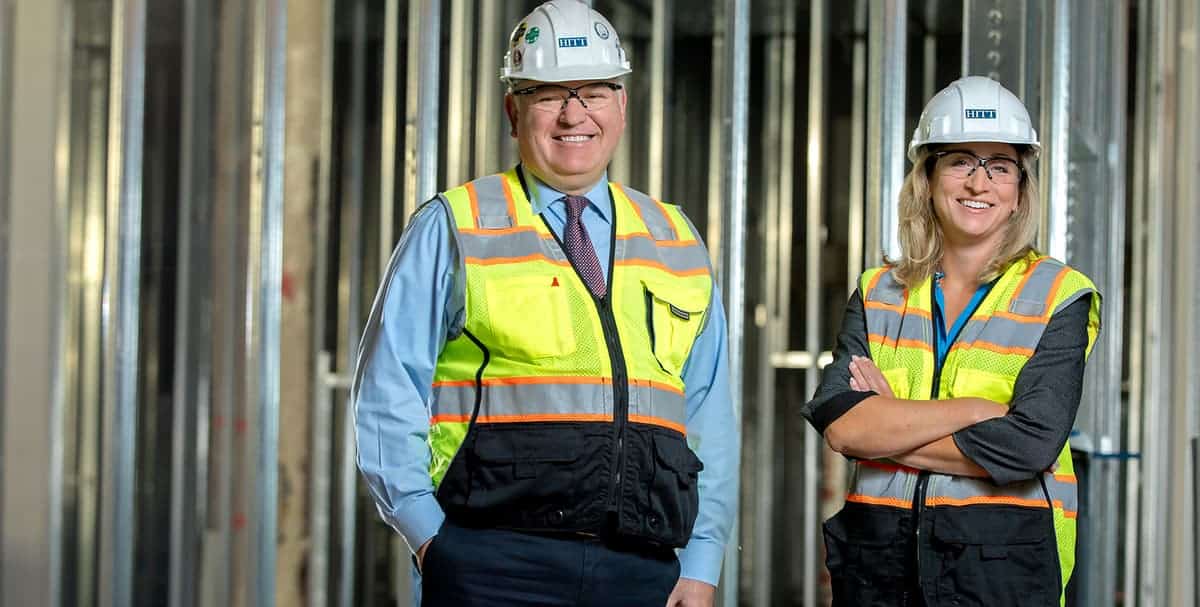
Anniversary Story | Jan 3, 2018
Building Better Outcomes
HITT Healthcare works in high-risk environments where, often only steps away, our clients are carrying out their missions of patient care and research. As a result, we’ve found that our healthcare projects differ fundamentally in three ways from our other construction projects.
First, healthcare projects are often technically complex, involving specialty systems and intricately planned schedules. Anyone who has seen the space above the ceiling in a hospital or has looked at a phasing plan for a healthcare renovation project can attest to the challenge. Beyond the specialty systems (think emergency power, critical power, medical gases, and isolation spaces) designed into a healthcare job, renovating space within or adjacent to healthcare environments requires complete, air-tight isolation of our construction activities from hospital operations to prevent contaminating sterile spaces.
“Circumstances change every day for our teams based on the construction and healthcare activities progressing around our sites,” shared Peter Bizic, project executive with our Healthcare sector. “As a result, we are continually adapting for the needs of our clients and their patients.”
Second, high stakes for success mean lower margin for error. Whether projects involve a critical infrastructure upgrade or accommodations for new medical equipment, bringing these systems online faster means better patient care, critical revenue for healthcare systems, and fewer disruptions to operations. The alternative outcomes range from inconvenient to tragic, making contingency planning just as important as primary planning.
Lastly, healthcare projects often carry with them a very personal connection for the tradespeople and managers working on the projects. In the oft-discussed quest for finding meaning in work, healthcare hits the mark. People’s lives are changed every day in emergency rooms, operating suites, neonatal intensive care units, and the research facilities we build and renovate.
“This fact is not lost on those of us who work on these projects,” continued Peter. “It is what motivates us, above all other things, to deliver the best quality construction service in the healthcare market.” Ultimately, delivering HITT’s signature quality work on time is only successful when our clients are also able to deliver their signature missions as a result of these projects.

